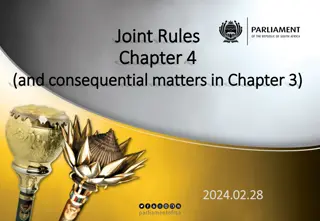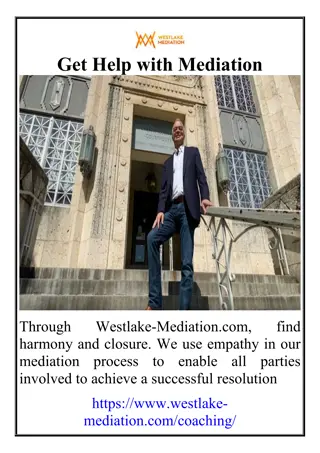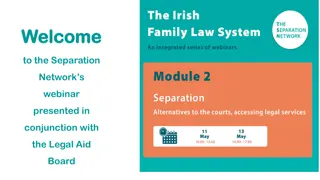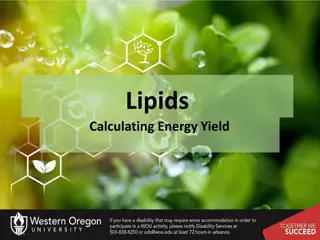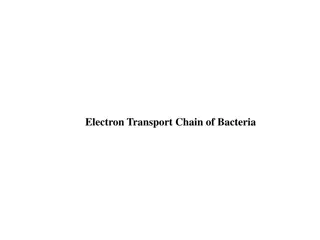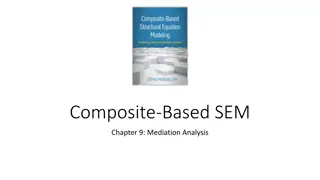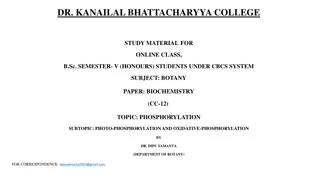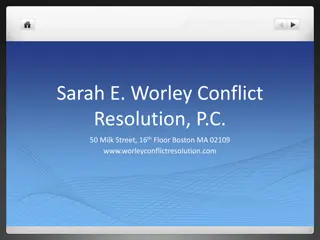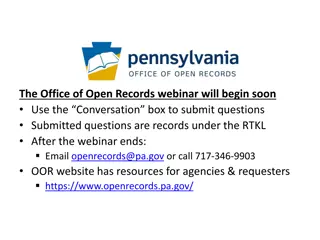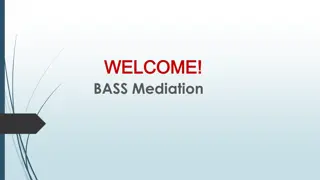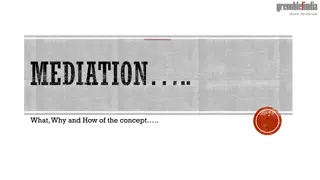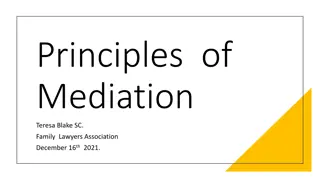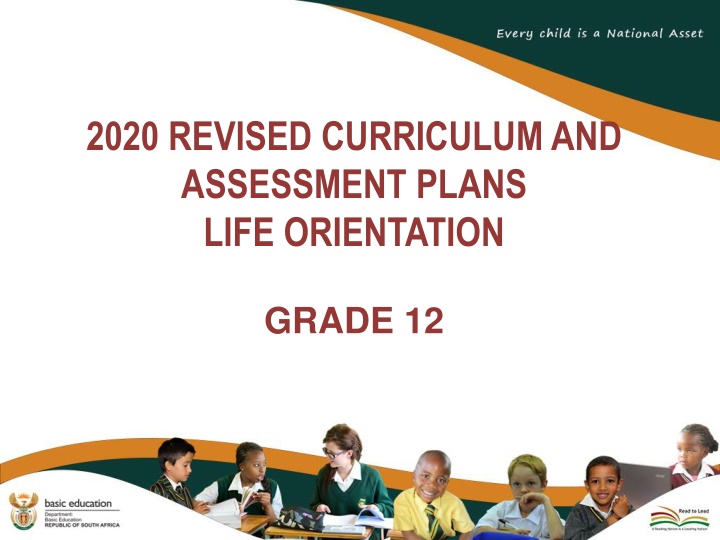
Enhancing Curriculum and Assessment Plans for Life Orientation Grade 12
Explore the amendments made to the 2020 curriculum and assessment plans for Grade 12 Life Orientation, including content overview adjustments and school-based assessment changes, to ensure effective teaching and student preparation.
Download Presentation

Please find below an Image/Link to download the presentation.
The content on the website is provided AS IS for your information and personal use only. It may not be sold, licensed, or shared on other websites without obtaining consent from the author. If you encounter any issues during the download, it is possible that the publisher has removed the file from their server.
You are allowed to download the files provided on this website for personal or commercial use, subject to the condition that they are used lawfully. All files are the property of their respective owners.
The content on the website is provided AS IS for your information and personal use only. It may not be sold, licensed, or shared on other websites without obtaining consent from the author.
E N D
Presentation Transcript
2020 REVISED CURRICULUM AND ASSESSMENT PLANS LIFE ORIENTATION GRADE 12
Presentation Outline 1.Purpose 2.Amendments to the Content Overview for the Phase; 3.Amendments to the Annual Teaching Plan; 4.Amendments School Based Assessment (SBA) 5.Conclusion
1. Purpose To mediate the amendments of the trimmed and re-organised 2020 Annual Teaching Plan including School Based Assessment for Life Orientation, Grade 12 for implementation in June 2020 as stipulated in Circular S2 of 2020. To ensure that meaningful teaching proceeds during the remaining teaching time as per the revised school calendar. To assist teachers with guided pacing and sequencing of curriculum content and assessment.
1. Purpose (continued) To enable teachers to cover the essential core content /skills in each grade within the available time. To assist teachers with planning for the different forms of assessment. To ensure learners are adequately prepared for the subsequent year/s in terms of content, skills, knowledge, attitudes and values
2. Amendments to the Content Overview for the Phase
SUMMARY: LO AMENDMENTS TO THE CONTENT OVERVIEW FOR THE PHASE GRADE 10 GRADE 11 GRADE 12 Ter m 2 Study skills: listening, reading, comprehension, concentration, memory, organization and time management Applying own study skills, styles and study strategies: Study skills: examine how learning takes place and reflect on effectiveness; 1. Stud y skill s Preparing for success: strategies to follow in order to succeed in the Grade 12 examination -Revision of own study skills -Revision of examination writing skills Study methods: note- taking, mind-mapping, selecting important concepts and content, assignment and essay construction and making comparisons Study styles as preferred way of approaching tasks; Study strategy as a way to approach a specific task in the light of perceived demands Examination writing skills and process of assessment Critical, creative and problem-solving skills Time management skills and annual study plan Goal-setting skills: personal development goals regarding study, health and fitness . Removed , the content is repeated). Process of assessment: internal and external Annual study plan Removed
SUMMARY: LO AMENDMENTS TO THE CONTENT OVERVIEW FOR THE PHASE Topic GRADE 10 GRADE 11 GRADE 12 Contemporary social issues that impact negatively on local and global communities (removed) Environmental issues that cause ill-health: Dealing with environmental factors that cause ill-health on personal level: attitudes, safety and first aid skills and. Coping with disasters. Climate change: causes, impact on development, mitigation, and adaptation. The use of harmful substances in food production; Inhumane farming methods; Impact of degradation on society and the environment: environmental hazards such as soil erosion, pollution, radiation, floods, fires, damage caused by wind and loss of open space or lack of infrastructure. Impact of depletion of resources such as fishing stocks, firewood and land (Removed) Participation in a community service that addresses a contemporary environmental issue indicating how this harm certain sectors of society more than others. (Removed) 3 Social and Environment al responsibility Community responsibility to provide environments and services that promote safe and healthy living: -Responsibilities of various levels of government: laws, regulations, rules and community services -Educational and intervention programmes; impact studies Formulating a personal mission statement for life based on: -Personal views, values, belief system, religion, ideologies, lifestyle (physical and emotional well-being), environmental responsibility, goals for studies and career choices impact of vision on: -Actions/behaviour in life -immediate community and society at large Concepts: social and environmental justice Social issues: crime, poverty, food security, food production, violence, HIV and AIDS, safety, security, unequal access to basic resources, (Removed) lack of basic services (water and health services) - harmful effects of these issues on personal and - Social responsibilities including the knowledge and skills to make informed decisions and take appropriate action Youth service development: youth and civic organizations, community services or projects and volunteerism (removed). Purpose and contribution, areas of strength and possible improvements. Own contribution to these services, projects and organizations: a group project to address a contemporary social issue that impacts negatively on local and/or global communities
SUMMARY: LO AMENDMENTS TO THE CONTENT OVERVIEW FOR THE PHASE Topic GRADE 10 GRADE 11 GRADE 12 Life roles: child, student, adult, role in family, partner, mother, father, grandparent, breadwinner, employee, employer, leader and follower - Evolving nature of and responsibilities inherent in each role; how roles change and affect relationships - Handling each role effectively: influence of society and culture Changes associated with development towards adulthood: adolescence to adulthood - Physical changes: hormonal, increased growth rates, bodily proportions, secondary sex/gender characteristics, primary changes in the body (menstruation, ovulation and seed formation) and skin problems (Removed) - Emotional changes: maturing personality, depth and control of emotions, feelings of insecurity, changing needs, interests, feelings, beliefs, values and sexual interest - Social changes: relationship with family, interaction with social groups, need for acceptance by and dependence on peer group, moving into the workforce and increased responsibilities - Coping with change: importance of communication and making friends 3. Developme nt of the self in society human factors that cause ill-health, accidents, crises and disasters: psychological, social, religious, cultural practices and different knowledge perspectives -Lifestyle diseases as a result of poverty and gender imbalances: cancer, hypertension, diseases of the heart and circulatory system, tuberculosis, sexually transmitted infections including HIV and Aids -Contributing factors: eating habits, lack of exercise, smoking, substance abuse and unsafe sexual behaviour -intervention strategies: prevention and control, early detection, treatment, care and support Commitment to participate in physical activities for long-term engagement: develop an action plan -Long-term effects of participation: physical, mental, social and emotional -Value-added benefits and diseases of lifestyle Healthy and balanced lifestyle choices: -Characteristics of a healthy and balanced lifestyle: physical, psychological, social, emotional and spiritual facets -Factors that impact negatively on lifestyle choices: Accidents; types of accidents; lack of knowledge and skills; unsafe attitudes and behaviors; unsafe environments and emotional factors (Re- clustered and infused into Youth Risks Behavior) Risky behaviour and situations: personal safety, road use, substance use and abuse, sexual behaviour, risk of pregnancy, teenage suicides, hygiene and dietary behaviour, sexually-transmitted infections (STI) HIV & Aids and peer pressure
SUMMARY: LO AMENDMENTS TO THE CONTENT OVERVIEW FOR THE PHASE (Con) Topic GRADE 10 GRADE 11 GRADE 12 Values and strategies to make responsible decisions regarding sexuality and lifestyle choices to optimise personal potential - Behaviour that could lead to sexual intercourse and teenage pregnancy, sexual abuse and rape - Values such as respect for self and others, abstinence, self- control, right to privacy, right to protect oneself, right to - say No and taking responsibility for own actions - Skills such as self-awareness, critical thinking, decision- making, problem-solving, assertiveness, negotiations, communication, refusal, goal- setting and information gathering relating to sexuality and lifestyle choices - Where to find help regarding sexuality and lifestyle choices - Relationship between recreational activities and emotional health 4 Development of the self in society Socio-economic environment: literacy, income, poverty, culture and social environment -Factors that impact positively on lifestyle choices: Positive role models; parents and peers; personal values; belief system; religion; media, social and cultural influences; economic conditions -impact of unsafe practices on self and others: physical, emotional, spiritual, social, economic, political and environmental -individual responsibility for making informed decisions and choices: coping with and overcoming barriers regarding behaviour and seeking support, advice and assistance Role of nutrition in health and physical activities Consolidation
3. Amendments to the Annual Teaching Plan
Summary: Content/Topics Amended Content/Topics Term 4 Amendment NO AMENDMENTS WERE MADE EXCEPT THE REMOVAL OF PET/ PE IN THE SECOND, THIRD AND FOURTH TERMS. CAT IS SHIFTED TO THE FOURTH TERM THE CONTENT STAYS THE SAME
4. Amendments School Based Assessment (SBA)
Summary: Revised Programme of Assessment Term 2 Term 3 Development of the self in society. Life roles: nature and responsibilities Life roles: child, student, adult, role in family, partner, mother, father, grandparent, breadwinner, employee, employer, leader and follower - Evolving nature of and responsibilities inherent in each role; how roles change and affect relationships - Handling each role effectively: influence of society and culture Term 4 Study skills Careers and career choices Study skills: listening, reading, comprehension, concentration, memory, organisation and time management Awareness of trends and demands in the job market: emerging demands or changing patterns of careers and scarce Study methods: note-taking, mind- mapping, selecting important concepts and content, assignment and essay skills and the job market - Reading the market for trends regarding jobs and identifying niches construction and making comparisons Critical, creative and problem-solving skills - Growth and decline of various occupations and fields of work and competencies linked to these jobs Social and environmental responsibility Changes towards adulthood Changes associated with development towards adulthood: adolescence to adulthood. Contemporary social issues that impact negatively on local communities: - SAQA, the NQF framework and recognition of prior learning. - Concepts: social and environmental justice The need for lifelong learning: - Emotional changes: maturing personality, depth and control of emotions, feelings of insecurity, changing needs, interests, feelings, beliefs, values and sexual interest - Social changes: relationship with family, interaction with social groups, need for acceptance by and dependence on peer group, moving into the workforce and increased responsibilities - Social issues: crime, poverty, food security, lack of basic services (water and health services) - ability to change, re-train, flexibility and ongoing development of the self - - Different kinds of learning: formal, informal and non-formal harmful effects of these issues on personal and community health Democracy and human rights Social skills and responsibilities to participate in civic life Living in a multi-religious society: understanding ethical traditions and/or religious laws of major religions in South Africa Social, constructive and critical thinking skills necessary to participate in civic life: - Major Religions: Judaism, Christianity, Islam, Hinduism Buddhism, Baha'i Faith and African Religion Coping with change: importance of communication and making friends - indigenous belief systems in South Africa:
4. Amendments School Based Assessment (SBA)
PROGRAMME OF ASSESSMENT MARKS YEAR % Ter Assessment task Recording Reporting m Written task 80 1 100 25% PET 20 60/60x100 2 Short task 60 25% =100 80/80x100 3 Project/ Task 80 25% =100 80/80X100 4 Final examination 80 25% =100
Summary: Revision Final Examination Structure section a: 20 marks section B: 30 marks section C: 30 marks Three 15-mark or four 10-mark questions will be set, of which learners will be expected to answer two or three respectively. All questions are compulsory. All questions are compulsory. Asource or case study may be used to contextualize some of the questions Short open-ended, scenario-based, source-based and case study questions Questions will predominantly focus on the application of knowledge and skills The questions have to be a combination of two or more types of questions ranging from what, why, list, describe, explain, multiple choice and true or false with a justification Questions should be knowledge- based, from information learners have acquired from the Life Orientation content Learners will solve problems, make decisions and give advice, raging from a few direct responses to extended writing of descriptive paragraphs or short essays that state, evaluate or examine an issue Learners should display, present and apply knowledge and skills gained and display an understanding of real-life issues affecting the youth and society at Test understanding and factual knowledge Responses should be short and direct and range from one word to a phrase or a full sentence/s (in point form) Each question will focus on the specific topic or the integration of content solutions: demonstrate goal-setting and decision-making skills Learners should provide direct responses, full sentences in point form and extended writing in short paragraphs Ashort text/ diagram/data/graphs/ cartoons can be provided as a stimulus Note. information provided in the texts have to be current, up-to-date, age-appropriate and learner-friendly. Each section will include questions at lower, middle and higher cognitive levels.
Contact Details Name: CES: Subjects Dr K Perumal Department of Basic Education Tel: 012 357 4257 /0843012514 Email: Perumal.K@dbe.gov.za

